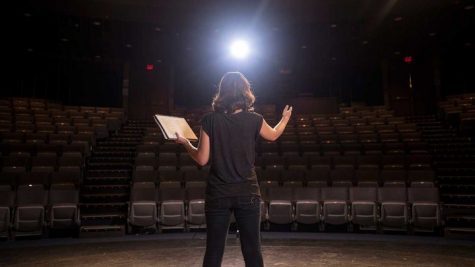Review: Searching
Though a popular target of scorn among film nerds and professional critics, the found-footage genre has experienced a resurgence of popularity at the box office in the 2010s. Chronicle, V/H/S, Unfriended and The Visit have all been big hits and have given some form of legitimacy to the format. However, the genre has yet to fully rise above the level of “budget-saving gimmick” to produce a legitimately great film. The pressure to contrive new reasons for the characters to be constantly filming everything and the inherent audience disconnect have proven a stumbling block in quality. The reason for this expositional dump is so that when I say Searching is the first great found-footage movie you understand the gravity of that statement.

Taking place entirely from the POV of a laptop screen, the film follows all-American dad David (John Cho) whose daughter has gone missing. In order to help the police in the investigation, David goes through his daughter’s computer and online profiles, digging up information and discovering that he may not have known his daughter as well as he thought.
There are several reasons why Searching works as a found-footage movie where others fail. Instead of just showing us the entirety of the screen for the duration of the film, there are often cuts to certain parts of the screen where there’s important information. This works because it reflects how the human eye works when looking at a screen and gives a greater sense of realism, which is lost in films like Unfriended. The fact that the story is presented less like a tape that was found after some big event the audience is being shown also helps. We’re still a part of the narrative just as much as the characters are; the story is just processed through a computer screen.
However, the fundamental reason why Searching works through the lens of found-footage is that it ties in with the story. The film is about the double lives that we lead online versus real life, and so most of the movie takes place on a computer screen. If the film were shot like a normal movie, all we would see is the back of John Cho’s head as he stares at a computer for an hour and a half. The film doesn’t need to contrive reasons for it to be on a computer screen because it’s a mystery thriller set in the modern era. In most other mysteries there’s a lot of the detective moving from one crime scene to the next so they can figure out clues with their incredible deduction skills. However, this film shows just how easy it is to get information and evidence just by sitting at your laptop and doing research online.
While the depressingly revolutionary innovation of a found-footage movie not being crap is all very well, the film still needs to have a good story or it’s just a disposable novelty. While the plot is a pretty standard mystery thriller, the characters are pretty alright. They’re not that complex or original, but they’re at least relatable and that’s worth a golf clap. There’s also a pretty good twist involving one of the main characters which I pretty much knew was going to happen, but ended up being surprised by anyway.
If I had a single complaint, it would be that the film could’ve used a different ending. I’m not going to spoil anything, but they made a tonal decision that I’m not really sure was the best way to go. If they had made the exact opposite choice it would’ve driven the narrative point home a lot harder and would’ve made a much bigger impact on the audience.
Searching is a fun little surprise that is worth seeing for more than just the laptop narrative device. With smart social commentary and an engaging story, this is one of the biggest surprises of the year so far.










